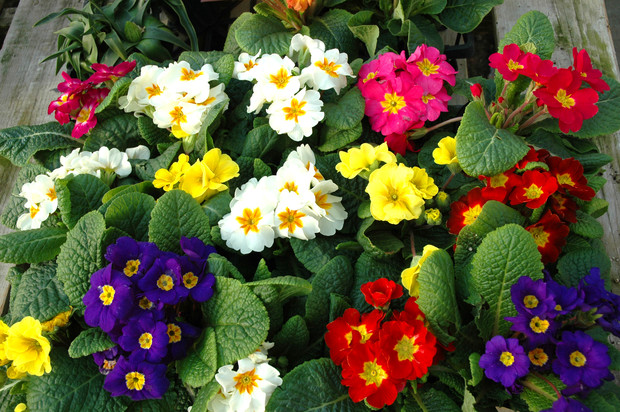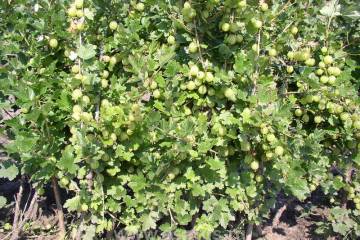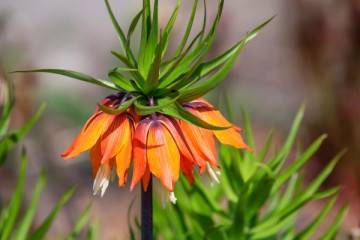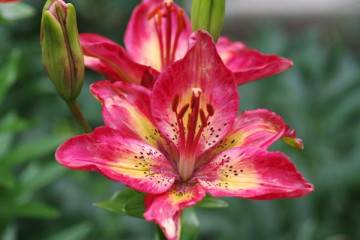When to Transplant Primrose - Spring, Summer or Fall
Content:
Primrose is a flower of amazing beauty, which with its decorative characteristics is not inferior to roses, peonies and tulips. Primrose care is quite easy, in addition to proper watering and feeding, it includes transplants. When to transplant a bushy flower and why it needs to be done are questions of interest to beginners in gardening.
Why transplant primrose to a new place or to another pot
For its active growth and abundant flowering, primrose takes nutrients and minerals from the soil. And the more luxuriant the bush blooms in the garden, the faster the soil is depleted. A transplant is necessary in order to renew the land and give the plant the necessary nutrition. Promotes soil change and flower rejuvenation.
A transplant is necessary in order to prevent the degradation of the flower, which blooms less and less willingly and luxuriantly with age.
When to replant after flowering: Spring or fall
The optimal time for transplanting a flower is the beginning of autumn - the first days of September, but no later than the 15th. By winter, the flower should have time to take root.
Is it possible to transplant primroses in summer
There is an opinion that only primrose transplant after flowering is possible. But it is not so. When to transplant the garden primrose, each gardener decides for himself, based on the state of the plant.
The planting of the bush is possible not only after the buds have faded, but also during flowering. For an unpretentious plant, such a procedure will not cause any damage. It is especially easy to transplant during the flowering period such varieties and species as Siebolda, Julia, spring, tall and fine-toothed primrose.
Regardless of the season in which the transplant will be carried out, an important rule must be observed. 1-2 weeks after the flower has changed its place, the ground around it must be weeded out. If this is not done, with a high degree of probability the plant will be affected by a disease such as powdery mildew or downy mildew.

You can transplant a flower, if necessary, during the period of active dissolution of buds, the procedure will not harm him at all
How often can a flower be transplanted
The optimal frequency of transplantation is once every 3-4 years, depending on the growth activity of the primrose. The following signs will indicate the need to change the place and soil for a flower:
- the bushes have become too large, the outlets are cramped;
- flowering is poor, passes quickly or does not occur at all;
- exposure of roots, due to which in winter the plant can freeze and die.
Preparing a place for a garden and indoor plant
Having decided when you can transplant the primrose to a new place, you need to choose it correctly so that the plant is comfortable. The flower loves slightly shaded areas that are not exposed to direct sunlight.It is important that groundwater does not pass close to the surface, there are no hollows where water could accumulate.
If a home plant is transplanted, it is necessary to prepare a new nutrient soil:
- The recommended substrate for primroses is a mixture of peat, turf and sand taken in equal parts.
- If ready-made land is purchased, sandstone must be added to it in the amount of 20% of the total soil volume.
The primrose pot should be shallow but wide. At the bottom, drainage holes must be present so that excess water flows out, and does not accumulate, causing rotting of the root system.
Reproduction of primrose
There are several ways to breed primrose. Dividing the bush is preferred. It makes it possible not only to get several new bushes, but also to rejuvenate the mother flower, stimulating its active growth and flowering.
Algorithm of actions:
- A few hours before digging the bush, it must be watered abundantly.
- When the plant is dug up, it needs to be divided into sockets. The more the primrose is, the more difficult it will be to accomplish this. It will not be difficult to separate young flowers with your hands, old ones can only be divided with a knife.
- On each part, you need to leave a piece of the root system, from which new sockets will begin to appear. The roots are old, the longest must be removed.
- Wells are being prepared for the plots - they are watered and fertilized. The holes are dug at a distance of at least 15 cm from each other.
During the first week after planting the bush, while the flower is rooting, it must be watered every day, but with a little water.
Many novice gardeners are interested in when to plant a primrose by dividing a bush. This is best done in early spring, before the bush begins to bloom, or in the last days of summer. Delenki, planted in late August and early September, are recommended to be covered with spruce branches or agrofibre for the winter.
Reproduction by rooting shoots
If the flower is young, with a not very well-developed root system, or the plant is weak, the method of rooting shoots is suitable for its reproduction:
- At the root collar, a petiole with a leaf plate is separated; it should have a bud and a small part of the shoot.
- The leaf blade on the petiole is shortened by 2 times.
- The cuttings are placed in nutrient soil, which consists of leafy soil mixed with coarse sand.
To increase the chance of rooting the cuttings, the planting procedure is recommended to be carried out at a temperature of + 16-18 degrees. The place chosen for planting shoots should be well lit, but not in direct sunlight.
When to plant primrose outdoors depends on the weather conditions. Stable warm weather should be established without the risk of frost return.
Caring for transplanted primrose in the garden and at home
Primrose is a completely unpretentious plant. It does not need to create special conditions both outdoors and indoors. But it should be borne in mind that primrose loves moisture. Watering should be frequent but moderate. Always keep the soil moist.
Top dressing
Fertilizers are used without fail 3 times a year. From March to May, complex mineral fertilizers are applied, with the onset of June - organic substances. When the primrose is actively blooming, ammonium nitrate or potassium mixed with superphosphate is used as a top dressing - for 10 liters of water, 20 g of superphosphate and 15 g of potassium. This nutrient blend will help maintain a long, lush bloom.Fertilizers are applied every 30 days.
In order for a garden or home primrose in a pot to actively grow and delight with abundant and long flowering, it must provide the following conditions:
- Lighting. The plant should not be exposed to direct sunlight, they will lead to burns and the need to reanimate the primrose. The flower will feel most comfortable in conditions of abundant, but diffused lighting.
- Humidity. Primrose needs high humidity, especially during the hot period. It is recommended to spray the flower with water at room temperature. To maintain the required level of humidity, you can put a flowerpot filled with wet pebbles or moss near the primrose tub.
- Temperature conditions. Primrose does not like too low and high temperatures, preferring moderate rates. The plant will feel most comfortable at + 18-22 degrees. At higher temperatures, the plant needs additional moisture. Primrose is very afraid of temperature changes during the night and daytime, from which it can develop a disease such as powdery mildew.
When deciding when to transplant primrose to a new place, you need to take into account the temperature. Almost all varieties and types of primrose will take root and take root quickly, provided that the temperature is from +12 to +15 degrees. The exception is the type of primrose inverse conical. This plant will be able to take root only if the temperature is in the range of + 15-18 degrees; at lower rates, the probability of rooting is practically absent.
Responsibly you need to approach the issue of wintering a transplanted bush. Primrose must be covered using spruce branches or hay, straw. Shelter preparation is not required. Leaves can be left to give the plant extra warmth. You can trim old sheet plates with the onset of heat.
The primrose needs a periodic transplant, every 3-4 years for its renewal and stimulation of flowering. Changing the place for the plant will give it a new, fertile soil, rejuvenate the root system. During transplanting, the flower can be divided into parts to get several new flowering bushes.



















